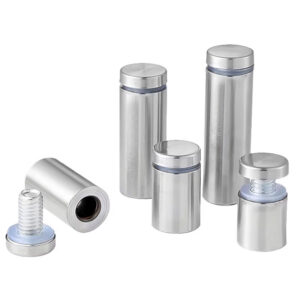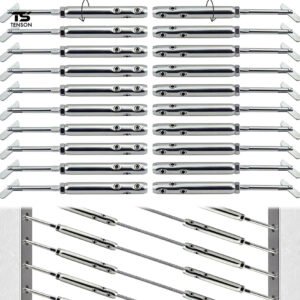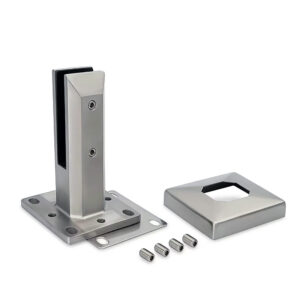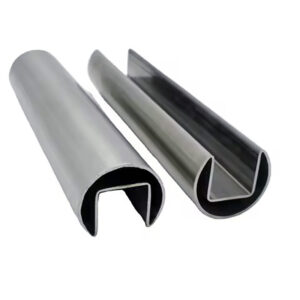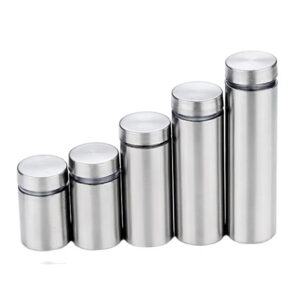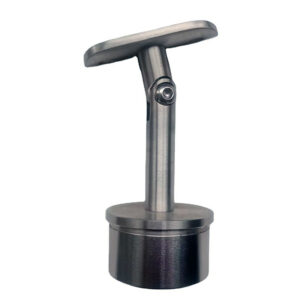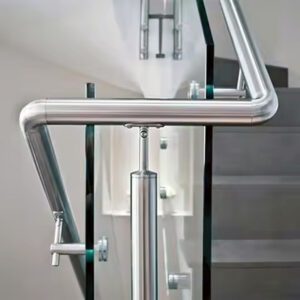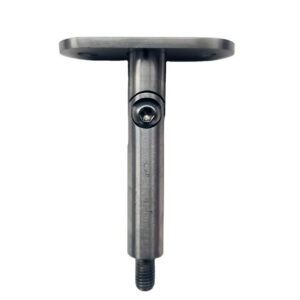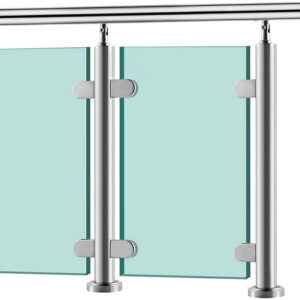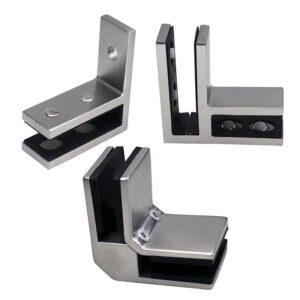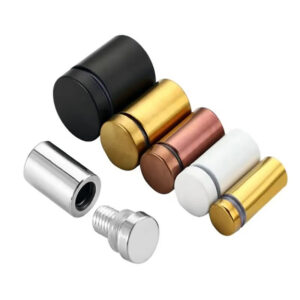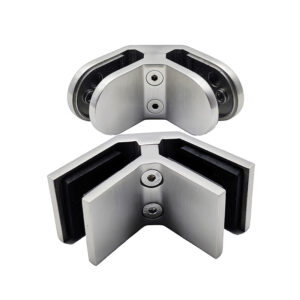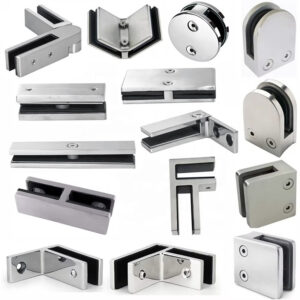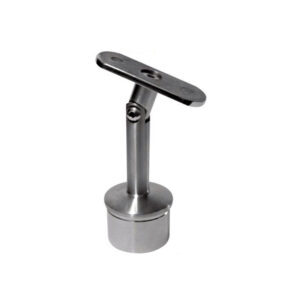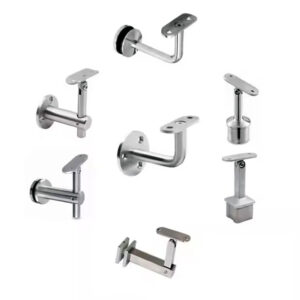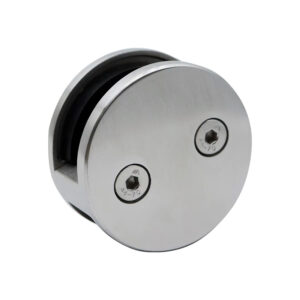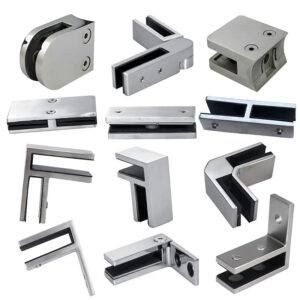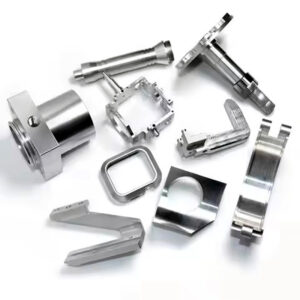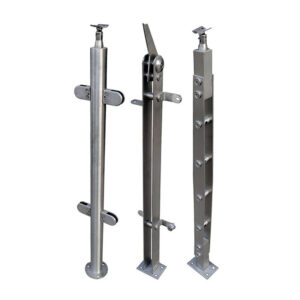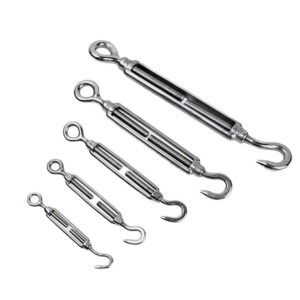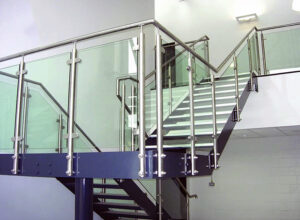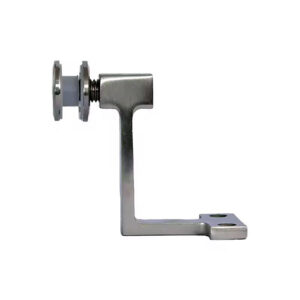Concrete anchor failures cost projects time and money—from rework delays to code compliance issues that shut down installations. After 23 years manufacturing precision hardware, we’ve seen contractors struggle with incompatible components, unclear load ratings, and anchor systems that look good on paper but fail in real applications. Professional-grade concrete anchor systems solve these problems with standardized components, verified performance data, and installation procedures that actually work in the field.
Reliable Concrete Anchor Systems for Professional Applications
Post-Mounted Anchor Solutions
Our concrete anchor systems center on proven post-mounting technology that delivers consistent results across residential, commercial, and industrial projects. Surface-mounted posts with engineered base plates distribute loads properly while simplifying installation procedures.
Core mounting components include:
- Heavy-duty base plates in 304 and 316L stainless steel configurations
- Post anchoring hardware with verified load ratings per IBC standards
- Adjustable mounting systems for uneven concrete surfaces
- Through-bolt and expansion anchor compatibility for different substrate conditions
Material Selection Guide:
- 304 stainless: Interior and standard exterior applications with cost efficiency
- 316L stainless: Marine environments, coastal installations, and chemical exposure areas
- Custom concrete anchor manufacturing available for specialized load requirements
The modular approach means contractors stock standard components instead of project-specific hardware, reducing inventory complexity while ensuring compatibility across different railing configurations.
Glass Panel Integration Systems
Commercial concrete anchor systems increasingly support glass panel installations requiring precise alignment and reliable weather sealing. Our integrated approach combines structural anchoring with glass-specific hardware.
Glass-compatible anchor features:
- Precision concrete hardware with tight dimensional tolerances
- Integrated drainage channels in base plate designs
- Gasket compatibility for weather seal requirements
- Load transfer optimization for wind and seismic forces
Field experience shows glass installations demand anchor systems that maintain alignment under thermal cycling. Our concrete anchor fabrication 316L processes ensure dimensional stability in coastal and high-stress environments.
Cable Railing Integration
Cable railing systems create unique anchor loading conditions with concentrated tension forces. Standard solutions address these requirements through engineered post-to-concrete connections.
Cable-specific anchor considerations:
- Enhanced base plate thickness for tension load management
- Pre-threaded mounting points for cable hardware attachment
- Corrosion protection at concrete interface points
- Post sizing optimized for cable tensioning forces
Technical Specifications and Performance Data
Load Capacity Reference
| Application Type | Base Plate Size | Bolt Configuration | Working Load (lbs) | Safety Factor |
|---|---|---|---|---|
| Residential Stair | 6″ x 6″ x 0.5″ | (4) 1/2″ dia. | 1,200 vertical | 4:1 |
| Commercial Balcony | 8″ x 8″ x 0.625″ | (4) 5/8″ dia. | 2,500 vertical | 4:1 |
| Industrial Platform | 10″ x 10″ x 0.75″ | (6) 3/4″ dia. | 4,000 vertical | 4:1 |
| High-Wind Coastal | 12″ x 12″ x 1″ | (8) 3/4″ dia. | 6,500 combined | 3:1 |
Material Performance Comparison
| Grade | Tensile Strength | Corrosion Resistance | Cost Factor | Best Applications |
|---|---|---|---|---|
| 304 Stainless | 70,000 psi | Good (interior) | 1.0x | Standard commercial, residential |
| 316L Stainless | 75,000 psi | Excellent (marine) | 1.4x | Coastal, industrial, chemical exposure |
| Duplex 2205 | 90,000 psi | Superior (extreme) | 2.1x | Offshore, severe industrial |
▶ Get Detailed Load Specifications ◀
Real-World Applications and Project Results
Commercial Office Complex – Seattle, WA
A 12-story office building required code-compliant railing systems across multiple balcony levels with seismic considerations. Our commercial concrete anchor systems provided standardized solutions across 200+ mounting points.
Project specifics:
- 316L stainless construction for Pacific Northwest weather exposure
- Seismic loading per ASCE 7 requirements in IBC Zone D2
- Installation time: 40% reduction vs. custom-fabricated alternatives
- Five-year maintenance inspection showed zero anchor movement or corrosion
“Standardized anchor components eliminated field measurement errors and reduced installation time significantly.” —Pacific Coast Construction Association
Marine Research Facility – Gulf Coast
Coastal installation demanded marine grade concrete anchors ODM solutions for observation deck railings exposed to salt spray and hurricane-force winds. The project required custom concrete anchor manufacturing to meet 180 mph wind load requirements.
Environmental challenges addressed:
- Direct salt water exposure requiring 316L minimum material grade
- Wind loads exceeding standard commercial specifications
- Concrete substrate with high chloride content from marine environment
- Maintenance access limitations requiring extended service life design
Post-installation monitoring over three years shows no measurable corrosion or load capacity degradation. The precision concrete hardware maintained dimensional stability through multiple hurricane events.
Industrial Manufacturing Plant – Ohio
Heavy industrial application required concrete anchor systems supporting equipment access platforms with dynamic loading from machinery vibration. The installation covers 500 linear feet of elevated walkways.
Industrial-specific requirements:
- Vibration resistance from adjacent manufacturing equipment
- Chemical exposure from process cleaning operations
- Load combinations including personnel, equipment, and materials handling
- Installation scheduling around 24/7 production operations
Results show installation efficiency improved 35% through modular component standardization. Maintenance costs reduced due to corrosion-resistant material selection and accessible anchor point design.
▶ Discuss Your Project Requirements ◀
Multi-Unit Housing Development – Arizona
Desert climate installation across 120 residential units required cost-effective concrete anchor solutions balancing performance with budget constraints. The project specified identical stair and balcony configurations across multiple building phases.
Residential optimization factors:
- 304 stainless adequate for low-humidity environment
- Standardized anchor spacing for consistent contractor training
- Bulk procurement savings through design standardization
- Installation scheduling coordination across construction phases
Contractor feedback indicates 25% labor time reduction compared to previous projects using non-standardized hardware. Three-year follow-up shows consistent performance across all installation points.
Installation Support and Quality Assurance
Streamlined Installation Process
Professional concrete anchor systems require more than quality hardware—successful projects depend on clear procedures and compatible components. Our approach addresses real-world installation challenges contractors face daily.
Installation advantages:
- Pre-engineered base plates eliminate field fabrication requirements
- Standard hole patterns work with common concrete drilling equipment
- Color-coded hardware packaging prevents component mix-ups during installation
- Installation templates ensure consistent anchor spacing and alignment
Field testing shows average installation time of 15 minutes per anchor point using standard tools and procedures. This compares to 25+ minutes for field-measured custom solutions.
Quality Control Through Manufacturing Precision
Twenty-three years of concrete anchor fabrication experience reveals that installation problems often trace back to manufacturing tolerances. Our precision concrete hardware approach addresses these issues through controlled manufacturing processes.
Manufacturing quality indicators:
- Dimensional tolerances within ±0.005″ for critical mounting surfaces
- Surface finish consistency ensuring proper gasket sealing
- Material certification tracing for code compliance documentation
- Pre-assembly testing to verify component compatibility
“Manufacturing precision eliminates field compatibility issues that delay project completion.” —National Association of Construction Hardware Distributors
Technical Support That Solves Problems
Complex projects require engineering support beyond standard product specifications. Our technical team draws on 23 years of real-world problem solving to address unique installation challenges.
Available engineering services:
- Load calculation verification for specific site conditions
- Custom anchor design for unusual geometric requirements
- Installation procedure development for challenging access situations
- Code compliance documentation for permit approval processes
▶ Connect with Engineering Support ◀
Frequently Asked Questions
How do I select the right stainless steel grade for my concrete anchor application?
Material selection depends primarily on environmental exposure. 304 stainless provides excellent performance for interior and standard exterior applications at lowest cost. Specify 316L stainless for coastal installations, chemical exposure, or anywhere chloride contamination exists. For severe industrial or offshore applications, consider duplex grades offering superior strength and corrosion resistance.
What anchor bolt specifications work with your concrete anchor systems?
Our base plates accommodate standard expansion anchors and through-bolts in 1/2″, 5/8″, and 3/4″ diameters. Hole patterns follow ACI 318 spacing requirements with minimum edge distances. Bolt grade should match expected loads—typically Grade 5 for residential, Grade 8 for commercial applications. We provide anchor selection guides matching bolt specifications to base plate configurations.
How do concrete anchor systems integrate with different railing types?
Modular post mounting systems accept standard pipe diameters from 1.5″ through 4″ depending on application requirements. Glass panel compatibility requires posts with integrated glazing channels. Cable railing installations need posts pre-drilled for cable hardware attachment. Our systems accommodate these variations through standardized mounting interfaces.
What installation time should I expect for concrete anchor systems?
Typical installation averages 15 minutes per anchor point using standard procedures and tools. This includes layout marking, drilling, anchor setting, and post attachment. Complex installations with multiple anchor points benefit from template systems reducing layout time. Glass panel or cable railing integration adds approximately 10 minutes per post for hardware attachment.
How do concrete anchor systems perform in seismic regions?
Seismic design requires attention to both strength and ductility. Our anchor systems meet IBC requirements for seismic zones through proper base plate sizing and anchor bolt specification. Critical factors include concrete edge distances, anchor spacing, and load path design. We provide seismic load calculations and detailing support for projects in high-seismic regions.
What maintenance do concrete anchor systems require?
Properly specified stainless steel anchor systems require minimal maintenance. Annual inspection should verify anchor bolt torque and check for any concrete cracking around base plates. Coastal installations benefit from periodic cleaning to remove salt deposits. Marine grade concrete anchors ODM solutions include enhanced corrosion protection extending maintenance intervals in harsh environments.
Competitive Analysis and Selection Criteria
Market Position Comparison
| Supplier Category | Strength Areas | Limitations | Best Project Types |
|---|---|---|---|
| Esang Metal Systems | Manufacturing precision, 23-year experience | Higher initial cost | Professional, long-term installations |
| Import Suppliers | Low initial cost | Quality inconsistency, limited support | Budget-sensitive, simple applications |
| Regional Fabricators | Custom capability | Limited standardization, longer lead times | Unique architectural requirements |
| National Distributors | Broad availability | Generic solutions, limited engineering support | Standard commercial applications |
Selection Criteria Framework
Choose precision concrete hardware when:
- Project requires code compliance documentation and engineering support
- Installation timeline benefits from standardized, compatible components
- Long-term performance justifies higher initial investment
- Complex applications need technical support and problem-solving experience
Consider alternatives when:
- Budget constraints override performance and support requirements
- Simple applications with minimal engineering complexity
- Local fabrication provides cost or schedule advantages
- Existing supplier relationships offer sufficient technical capability
“Best concrete anchor specs balance immediate cost with total project value including installation efficiency and long-term reliability.” —Construction Industry Research Institute
Professional concrete anchor systems deliver value through reliable performance, installation efficiency, and proven long-term service. Our 23 years of manufacturing experience solving real-world challenges provides the foundation for systems that work correctly from project start through years of service. Contact our technical team to discuss how precision concrete hardware solutions address your specific project requirements.
